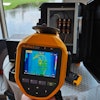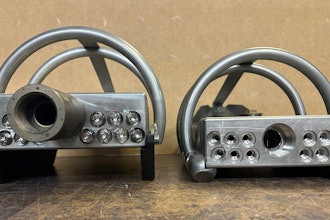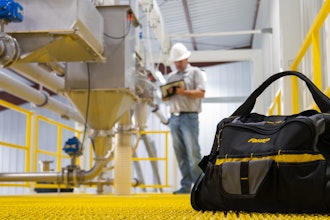Historically, predictive maintenance relied heavily on bespoke analytical models and large teams of highly skilled data scientists. These experts would run machines to failure, analyze the data they produced, and use it as a baseline against which to spot similar patterns as they occur in the future. It is only in very recent times though, that the technology has overcome the high cost and complexity traditionally associated with predictive maintenance programs.
The reward for this substantial investment in time and expertise was that instead of working to predefined maintenance schedules or responding once a failure has occurred, engineers could provide the right maintenance at precisely the right time. It is an approach that helps keep aircraft in the air and the most critical wheels of industry turning.
While it has been recognized that applying this across an entire manufacturing environment would deliver improvements in machine uptime and maintenance efficiencies, the level of monitoring and expert interpretation required meant that it was simply uneconomic.
It is only with recent advancements in data science and artificial intelligence (A.I.), that manufacturers can capitalize on the full potential of predictive maintenance, at a cost that makes sense for factory-wide deployment.
This five-point plan will show you how manufacturing environments of all shapes and sizes can ride this wave of progress and achieve substantial improvements in productivity and efficiency by implementing predictive maintenance at scale.
No. 1 - Use the data your machines produce already
One of the first challenges associated with implementing predictive maintenance initiatives is choosing which data to gather, analyze and act upon. We recommend that our clients take a pragmatic approach and analyze the data that their machines already produce.
It is possible to collect and analyze a range of key data sets from most industrial machines and many manufacturers are gathering it already for incident logging or historical analysis. Data relating to machine current, torque or pressure can be all that is needed to spot early signs of problems and a wide range of different failure modes.
No. 2 - Start standard, then let the algorithms improve themselves
A key factor in scaling predictive maintenance is to ensure that the algorithms you start with can be applied to any machine from any manufacturer.
Instead of creating bespoke algorithms for each machine, we recommend starting with a series of generic algorithms and letting them improve themselves over time. Smart solutions learn on the job, automatically figuring out the most appropriate algorithm for each monitored asset and optimizing their own performance as they are fed with more data.
No. 3 - Leverage the cloud to analyze at scale
Scaling up predictive maintenance initiatives using traditional approaches would involve employing more data scientists or retraining engineers with a completely new set of skills.
Advances in A.I. mean that is now possible to collect and analyze machine data at an enormous scale. Computers can crunch through data from tens of thousands of machines automatically to spot the signs that a machine is failing.
Large amounts of compute resource are required to facilitate the number crunching this kind of large-scale condition monitoring requires. The cloud provides that power precisely in line with demand. Initiatives proven on a small cluster of machines can be expanded rapidly to many thousands more.
No. 4 - Set up insights and alerts to utilize your engineering resource better
Once monitoring of manufacturing machinery is largely automated, it is important that machine health and prognostics are reported correctly. Rather than bombarding engineers with large and complex data sets, it is better that these insights are delivered to relevant members of the organization in a simple, easily understandable format.
Simple alerts can be set up to provide information about matching failure models and likely remaining useful life of each piece of machinery, allowing predictive maintenance to be performed effectively and efficiently without the need for deep pockets or teams of data scientists.
The insights created by smart algorithms are very empowering. Engineers without any previous data science experience can respond to machine failure events within minutes, and—even more impressively—address predicted problems before they can affect production.
No. 5 - Be prepared to re-engineer your maintenance culture
The one thing that predictive maintenance algorithms can’t fix automatically is the change in workplace culture they create. Rather than working to predefined maintenance schedules or responding to machine failures, engineers will need to get used to the idea that their workload will be influenced by a computer.
Manufacturers without data scientists on their payroll will find that they can use sophisticated data science without making any further hires or having to retrain existing personnel. Those with these experts already will find that they can automate the mundane aspects of those roles such as day-to-day monitoring and analysis, allowing them to focus their efforts on more complex and challenging tasks that require a greater degree of creativity and lateral thinking.
Engineers will have to react to the differences predictive maintenance will bring. It could be as simple as changing how you start your day, sitting down to look at the likes of a dashboard to discover where they should focus their attention that day.
The analytics tools that make large scale predictive maintenance possible are already delivering a substantial productivity boost to the maintenance department and beyond. By monitoring all their machinery and not just the critical points of failure, manufacturers have also been able to reduce unplanned downtime by up to 50 percent, deliver dramatic improvements in throughput, quality and margin, and achieve reductions in maintenance costs of up to 40 percent.
Dr. Simon Kampa is CEO and co-founder of Senseye.























